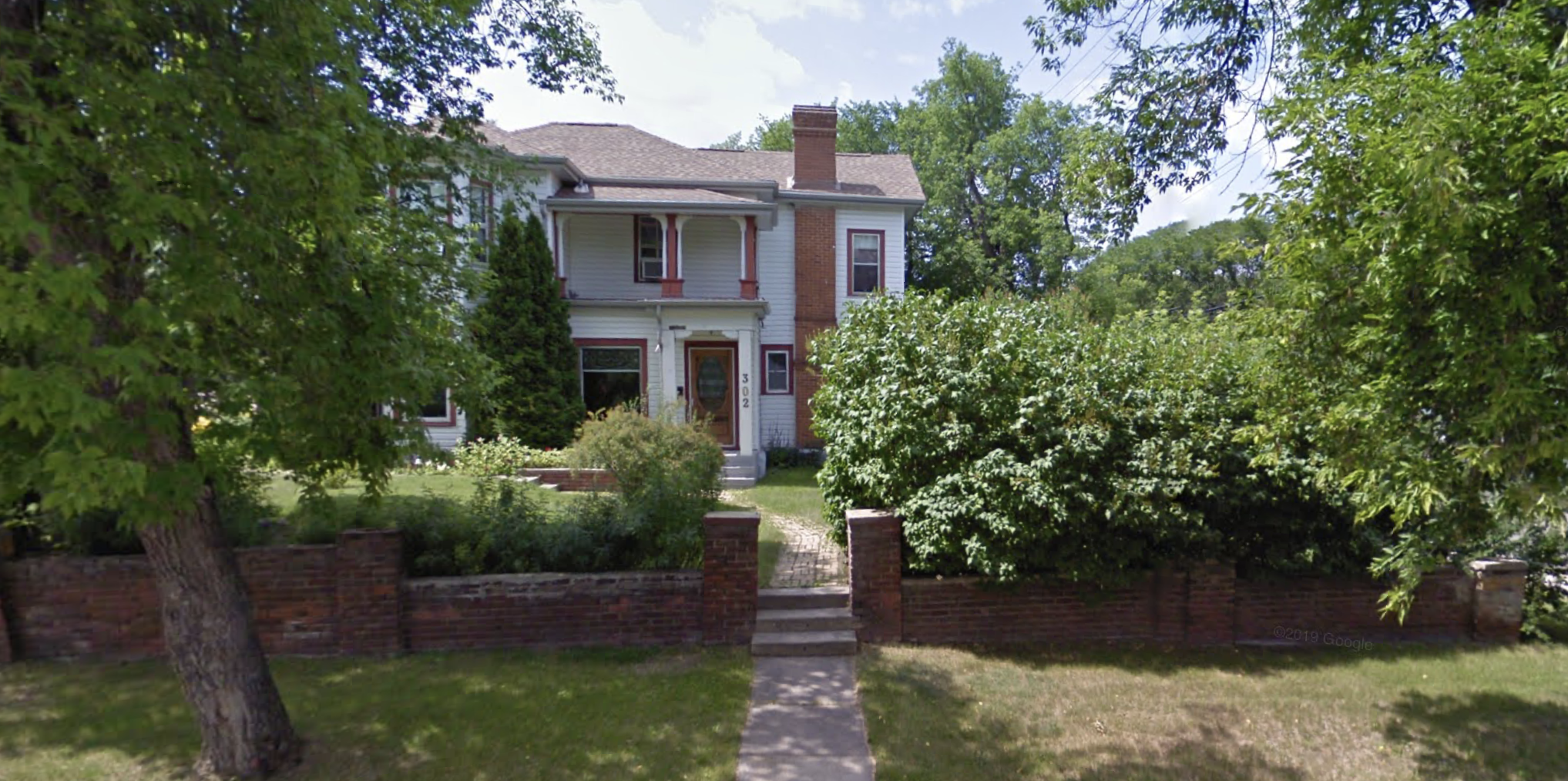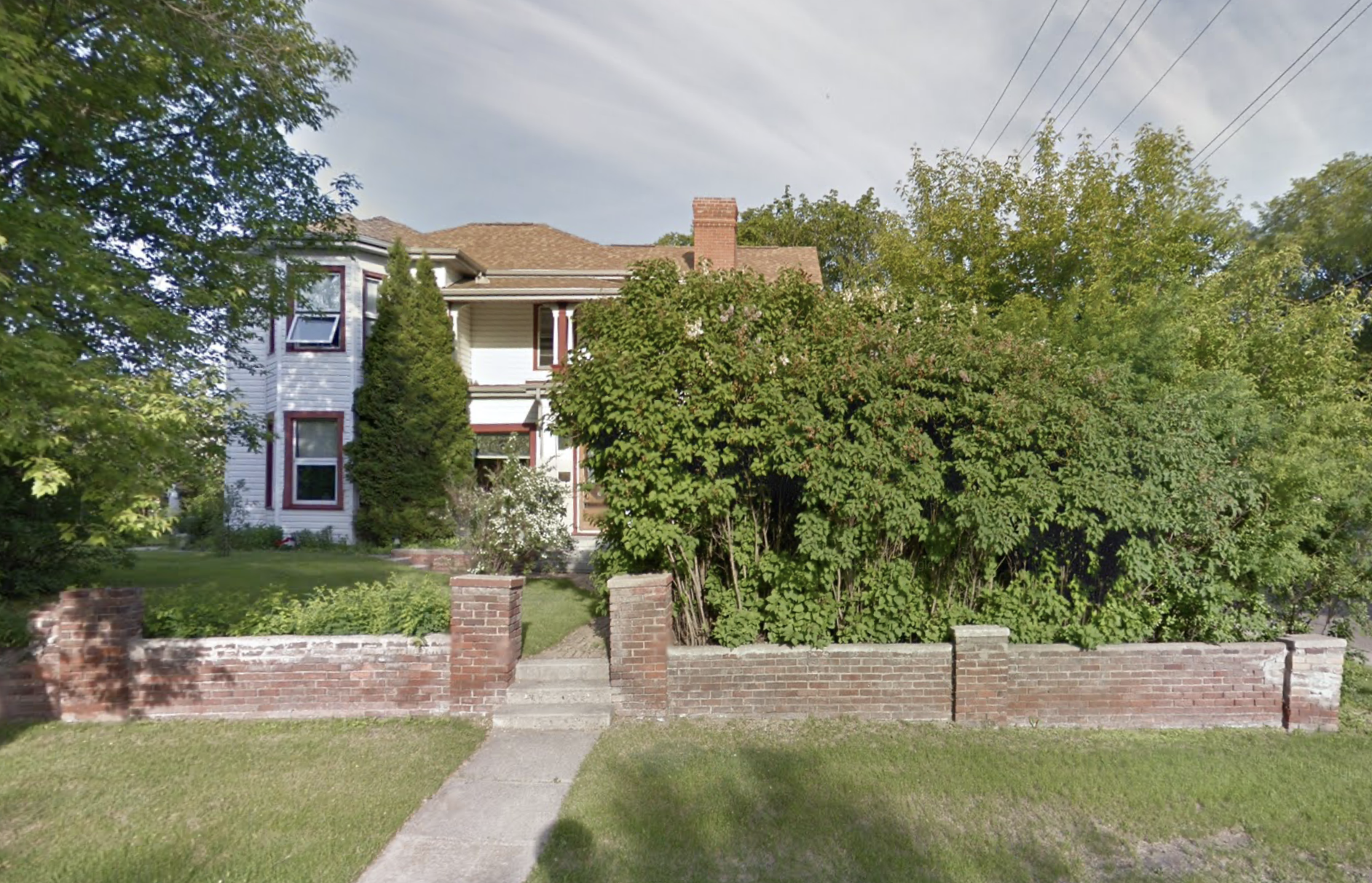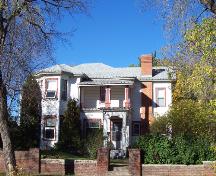Buildings
302 Russell Street, Brandon
| Formerly: | Former Shillinglaw Residence |
|---|---|
| Address: | 302 Russell Street,Brandon |
| Constructed: | 1882 |
| Architects: | Walter Shillinglaw |
More Information
This structure was built by James Shillinglaw and his son Walter in the summer of 1882 at a cost of $3,500. During 1906, Walter added a north wing to the house which included a large exterior chimney, a main floor library, and a second floor sitting room. This house was made in the prevalent Italianate style, with a low-pitched roof, triangular window caps, bay windows, and a small two-storey porch in the “ell” formed by the joining of the front parlour wing to the main body of the house.
The structure is of wood frame construction and was the first home in the City of Brandon to use a stone foundation. It is one of the oldest surviving structures among the early houses of Brandon. Stained glass windows and oak woodwork, stairs, and door casings are just a few of the interior elements still intact inside the building.
Both Walter and his father James were well-known Brandonites for many years. In a professional sense, Walter Shillinglaw was one of Western Manitoba’s earliest architects, as well as its longest practicing member. Mr. Shillinglaw was also Brandon’s City Engineer from 1896 until 1909 and was responsible for the design of the 1st and 18th Street bridges. In this regard, and in particular to his many years of civic service, Shillinglaw was tremendously important in the physical development of Brandon during its first half century.
The building was designated as a Municipal Heritage Site in June 2003.
Source:Heritage Brandon
Design Characteristics
- Key elements that define the site's heritage character include:
- - its location on the southwest corner of Russell Street and Louise Avenue East in Brandon's East End, set behind a low brick fence and mature trees on a landscaped lot
- Key elements that define the modest Italianate-style design of Shillinglaw House include:
- - the structure's asymmetrical massing, characterized by elements of various shapes, sizes and positions, especially on the front facing, all of wood-frame construction on a stone foundation
- - the complex multi-level roofline and picturesque front facade with its wood detailing, including the canopied entrance with square pillars, a second-floor balcony with slender Tuscan columns and curved brackets, a tower-like angled two-storey bay window and a wide exterior brick chimney with decorative corbelled courses
- - the number and variety of windows on all elevations, including single rectangular openings of varying heights and widths with wide plain casings, the ground-floor bay and second-storey Palladian windows on the north elevation, the two ground-floor openings on the south side with triangular window caps and the lower windows in the two-storey front bay topped by segmental-arched caps
- Key elements that define the dwelling's well-preserved interior include:
- - the side-hall plan with spacious entrance foyer, modest staircase and large well-lit rooms
- - the graceful, open living and dining rooms separated by an oak-trimmed archway sided by Tuscan columns, also in oak
- - the oak floors and woodwork on the main floor, featuring ample door and window casings
- - the interior doors on the main floor in well-maintained oak with decorative leaded-glass windows
- - several stained-glass windows, including a wide panel over the window in the foyer, a matched pair flanking the library fireplace overmantel and a small opening in the entrance porch
- - details such as the lantern-like light fixtures in the foyer and at the foot of the stairs, a pocket door, wall mouldings in the dining and living rooms, a library plate shelf, a bracketed shelf over the door between the library and the hallway, spiral wooden basement stairs, etc. Source: historicplaces.ca



